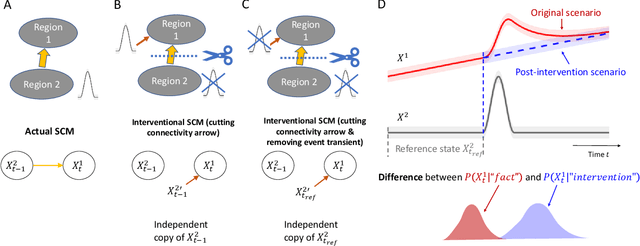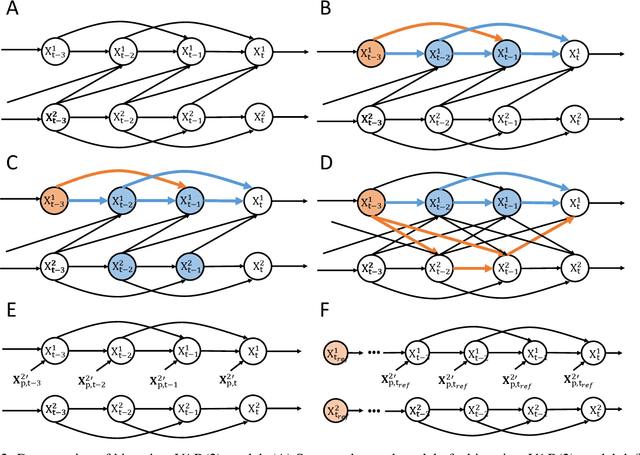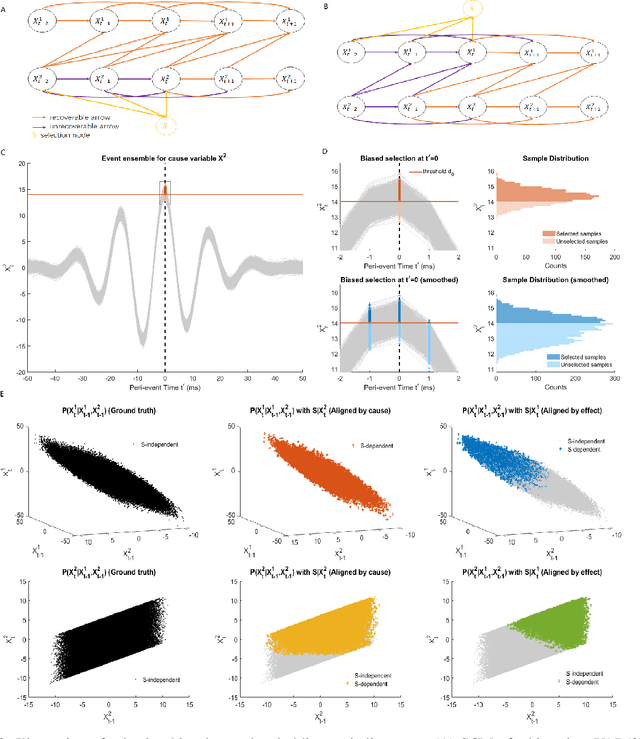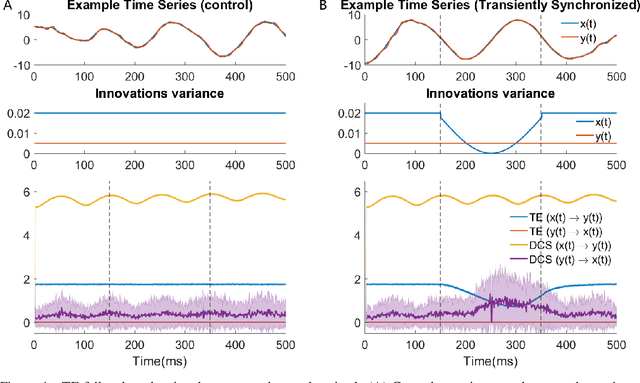Information Theoretic Measures of Causal Influences during Transient Neural Events
Paper and Code
Sep 15, 2022



Transient phenomena play a key role in coordinating brain activity at multiple scales, however,their underlying mechanisms remain largely unknown. A key challenge for neural data science is thus to characterize the network interactions at play during these events. Using the formalism of Structural Causal Models and their graphical representation, we investigate the theoretical and empirical properties of Information Theory based causal strength measures in the context of recurring spontaneous transient events. After showing the limitations of Transfer Entropy and Dynamic Causal Strength in such a setting, we introduce a novel measure, relative Dynamic Causal Strength, and provide theoretical and empirical support for its benefits. These methods are applied to simulated and experimentally recorded neural time series, and provide results in agreement with our current understanding of the underlying brain circuits.
 Add to Chrome
Add to Chrome Add to Firefox
Add to Firefox Add to Edge
Add to Edge